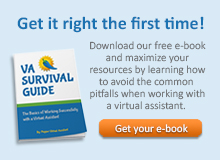Imagine yourself face-to-face with an auditor demanding transaction records from a year and a half ago, and you’re drawing a complete blank. Your stomach drops. This isn’t some far-fetched horror story; it’s a reality that catches businesses off guard every single day. Here’s the thing: you can absolutely prevent this nightmare. The secret? Rock-solid financial records for audits that are organized, accessible, and complete.
When your paperwork is tight, audits transform from panic-inducing disasters into routine business activities. No sweat, no sleepless nights, no scrambling through dusty filing cabinets at midnight.
Essential Components of Audit-Ready Financial Records
Building a bulletproof documentation system means understanding exactly what auditors expect and how to deliver it flawlessly. Your general ledger serves as the foundation of everything. Every single transaction needs proper categorization, accurate dates, and crystal-clear descriptions explaining the business purpose.
Think of your ledger as telling your complete financial story, no additional interpretation required. Supporting documentation must exist for every ledger entry. We’re talking invoices, receipts, contracts, purchase orders, basically any paperwork that validates your transactions. Monthly bank reconciliation records are non-negotiable, complete with explanations for discrepancies or unusual items.
Tax returns and supporting schedules need to be immediately accessible, along with documentation explaining how you calculated every figure. Include depreciation schedules, payroll summaries, and detailed breakdowns of estimates or judgments used in financial reporting.
Alpharetta has become a hotbed for thriving businesses, creating increased demand for financial expertise. This makes bookkeeping services in Alpharetta, GA incredibly valuable for local entrepreneurs. The city’s prime location north of Atlanta draws small businesses and startups that need rock-solid support. Many companies have discovered that these services provide the expertise necessary for maintaining audit-ready records, freeing owners to focus on growth and operations.
Digital vs. Physical Record Organization
Cloud-based storage solutions blow traditional filing systems out of the water. Modern platforms deliver automatic backups, user access controls, and audit trails showing who accessed what information and when. But you absolutely must implement proper security protocols to protect sensitive financial data.
Document retention policies need alignment with legal requirements while staying practical for daily operations. Different document types have different retention periods. You’ll need clear procedures for archiving older records while keeping current information easily accessible.
Backup and recovery systems become mission-critical when storing financial data digitally. Multiple backup locations, regular testing procedures, and detailed recovery plans ensure your financial records survive technical failures, natural disasters, or security breaches.
Audit Preparation Tips: Building a Bulletproof Documentation System
Establishing robust documentation systems provides your foundation, but success hinges on consistent implementation and ongoing maintenance.
Implementing Real-Time Record Keeping Practices
Daily transaction recording prevents the nightmare of unprocessed document accumulation. When you enter transactions immediately, you capture important details while they’re fresh in everyone’s memory. This practice also makes errors easier to spot and fix quickly.
Monthly reconciliation procedures ensure your records align perfectly with bank statements, credit card accounts, and other external sources. These regular checkpoints catch discrepancies before they snowball into larger problems requiring extensive investigation during audits.
The Department of Defense has attempted to collect examples of outcomes from financial statement audits, but these efforts remain limited. This highlights how even massive organizations struggle with comprehensive audit preparation processes, making systematic approaches even more valuable for smaller businesses.
Creating Comprehensive Audit Trails
Transaction documentation standards require clear policies about what information to capture and how to store it. Every entry should include dates, amounts, parties involved, business purposes, and references to supporting documents. Consistent formatting makes information infinitely easier to find and understand.
Approval workflow documentation shows who authorized transactions and when approvals occurred. This becomes especially critical for larger expenses, unusual transactions, or changes to standard procedures. Clear approval chains demonstrate proper internal controls.
Change management systems track modifications to financial records, including who made changes, when they occurred, and why they were necessary. This transparency builds auditor confidence and helps identify potential problems before they become serious issues.
Establishing robust documentation systems provides your foundation, but sustaining audit readiness requires disciplined maintenance practices that keep financial records current and compliant every single day.
Maintaining Financial Documentation Throughout the Year
These year-round maintenance strategies form your audit preparation backbone, though specific implementation varies significantly based on business size, structure, and industry requirements.
Monthly Financial Hygiene Practices
Bank statement reconciliation should happen within the first week of each new month. This timing lets you catch errors quickly while transaction details remain clear in everyone’s memory. Prompt reconciliation also helps identify fraudulent activities or bank errors before they cause bigger headaches.
Invoice and receipt organization systems need consistent application year-round. Digital scanning eliminates physical storage headaches while creating searchable databases. However, you’ll need clear naming conventions and folder structures to make documents easy to locate later.
Expense categorization requires ongoing attention to maintain accuracy. Regular reviews help catch miscategorized items that could affect tax deductions or financial analysis. Consistent coding standards make it easier for others to understand your system during audits or staff transitions.
Quarterly Compliance Reviews
Internal audit procedures provide valuable checkpoints between annual external audits. These reviews help identify documentation gaps, process improvements, and potential compliance issues before they become serious problems. Regular internal audits also help staff stay current with proper procedures.
Financial statement preparation gets dramatically easier when you maintain current records throughout the year. Quarterly statements help identify trends, catch errors, and ensure your annual statements won’t contain nasty surprises. This practice also makes year-end closing procedures much smoother and faster.
Beyond meeting basic compliance requirements, forward-thinking businesses use sophisticated approaches that transform audit preparation from a reactive burden into a proactive competitive advantage.
Audit Compliance Best Practices for Different Business Types
Audit compliance best practices vary dramatically based on business structure, size, and industry requirements, though certain principles apply universally.
Small Business Compliance Strategies
Simplified documentation systems work better for businesses with limited administrative resources. Focus on core requirements rather than complex procedures that become difficult to maintain consistently. Cloud-based accounting software often provides sufficient functionality without requiring extensive technical expertise.
Cost-effective solutions include automated bank feeds, receipt scanning apps, and simple approval workflows. These tools reduce manual data entry while maintaining proper documentation standards. Many small businesses discover that investing in basic automation pays for itself through time savings and error reduction.
Outsourcing considerations become important when internal resources can’t handle comprehensive record-keeping requirements. Maintaining financial documentation becomes much easier when professional services handle routine tasks while business owners focus on growth and operations.
Corporate Compliance Requirements
Larger organizations need more sophisticated systems to handle complex transactions, multiple locations, and regulatory requirements. Sarbanes-Oxley compliance demands extensive documentation of internal controls, approval processes, and change management procedures.
Internal controls must be formally documented, regularly tested, and continuously improved. This includes segregation of duties, authorization limits, and oversight procedures that prevent errors and fraud. Multi-location businesses need standardized procedures that work consistently across different sites and departments.
Even with advanced systems in place, businesses must remain vigilant for warning signs that could indicate vulnerabilities in their financial documentation before auditors discover them.
Common Questions About Financial Record Management
-
How long should businesses retain financial records for audit purposes?
Most businesses should keep tax records for seven years, while employment records need four-year retention. Banking records typically require three-year retention, though longer periods provide better protection.
-
What happens if a business can’t provide the requested financial documentation during an audit?
Missing documentation can result in denied deductions, estimated assessments, and additional penalties. Auditors may also expand their review scope when records appear incomplete or unreliable.
-
Can digital financial records be considered as reliable as paper documents during audits?
Digital records are fully acceptable when properly maintained with adequate security controls, backup procedures, and audit trails showing document integrity and authenticity.




